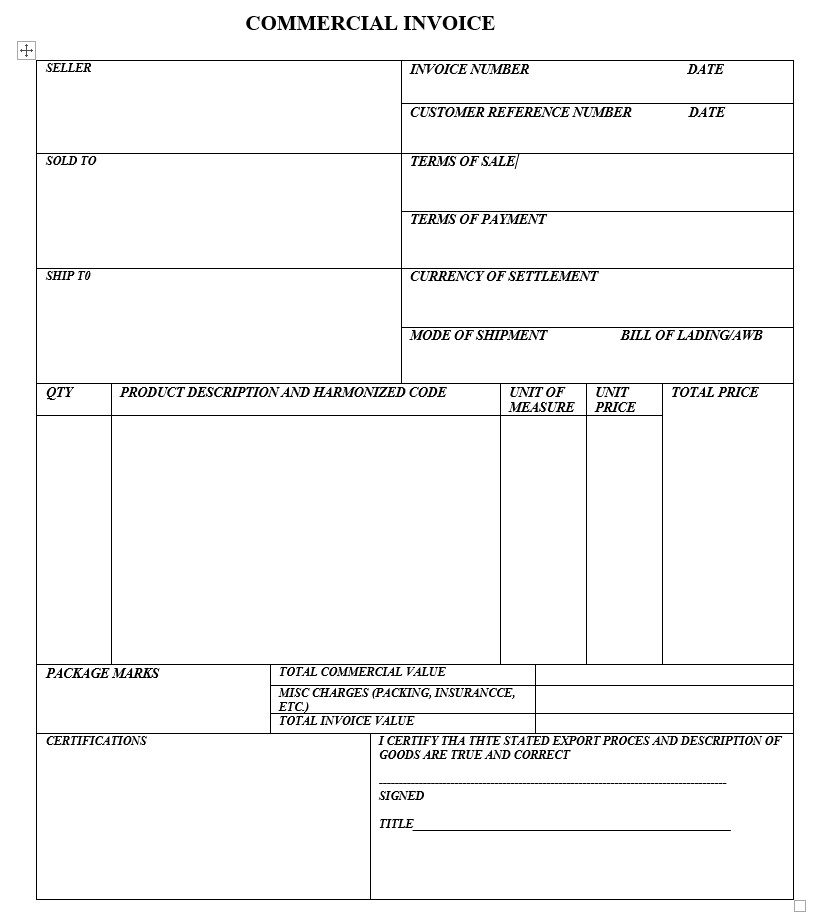When exporting goods from India, clear and accurate documentation is key to ensuring that the goods are shipped correctly and efficiently. Among the various documents required, the Combined Commercial Invoice and Packing List is particularly important. This document combines two essential pieces of paperwork: the Commercial Invoice and the Packing List.
What Is a Combined Document and Its Importance?
Let’s break down what this combined document is and why it’s important for exporting goods.
1. What is a Commercial Invoice?
A Commercial Invoice is a detailed document that acts as a bill for the goods being sold. It is issued by the exporter (seller) to the importer (buyer) and outlines the terms of sale. The Commercial Invoice includes key information such as:
- Description of the goods: Details about the products being exported, including quantity, quality, and type.
- Price and payment terms: The total cost of the goods, including any discounts, taxes, or other charges, and the payment terms agreed upon by both parties.
- Seller and buyer information: The names and addresses of the exporter and importer.
- Shipping details: Information about the mode of transportation, delivery terms (like FOB, CIF, etc.), and the port of origin and destination.
Why is the Commercial Invoice Important?
- It serves as proof of the sale and is used by customs authorities to determine the value of the goods for duty and tax purposes.
- It is a key document in the payment process, often required by banks when handling letters of credit or other payment methods.
- It provides essential details that ensure the goods are correctly identified and processed during shipment.
Sample Image Of Commercial Invoice

Credit: Export.Gov
2. What is a Packing List?
A Packing List is a document that provides detailed information about the contents of the shipment. While the Commercial Invoice focuses on the sale and payment aspects, the Packing List is more concerned with the physical packaging and contents of the shipment. It includes:
- Itemized list of goods: A breakdown of all the items included in the shipment, including descriptions, quantities, and sometimes even the weight and dimensions of each package.
- Packaging details: Information about how the goods are packed, such as the type of packaging (boxes, crates, pallets, etc.) and the number of packages.
- Shipping marks and numbers: Details that help identify and track the packages during transit.
Why is the Packing List Important?
- It helps the importer verify that they have received the correct goods in the right quantities.
- It is used by customs authorities to inspect the shipment and ensure that the contents match the descriptions on the Commercial Invoice.
- It assists the shipping company in handling and delivering the packages correctly.
Sample Image of Packing List

Why Combine the Commercial Invoice and Packing List?
In some cases, exporters choose to combine the Commercial Invoice and Packing List into a single document. This Combined Commercial Invoice and Packing List streamlines the documentation process by providing all the necessary information in one place. This combined document includes:
- Complete product and packaging details: A comprehensive list of the goods being shipped, including descriptions, quantities, packaging details, and shipping marks.
- Financial information: All the pricing and payment terms that would typically be found in a Commercial Invoice.
- Shipping and delivery details: Information about the mode of transport, delivery terms, and the ports of origin and destination.
Why is the Combined Document Important?
- It simplifies the documentation process for both the exporter and the importer by reducing the number of separate documents that need to be handled.
- It provides a clear and comprehensive overview of the shipment, making it easier for customs authorities, shipping companies, and importers to process the goods efficiently.
- It reduces the risk of discrepancies between separate documents, ensuring that the details are consistent and accurate.
Conclusion
The Combined Commercial Invoice and Packing List is a vital document in the export process, especially when efficiency and clarity are priorities. By merging the Commercial Invoice and Packing List into a single document, exporters can streamline the paperwork, reduce the risk of errors, and ensure that their goods are shipped smoothly and without complications.
Understanding this document is crucial for any exporter, as it plays a key role in the financial, logistical, and legal aspects of international trade. By providing clear and accurate information about both the sale and the shipment, the Combined Commercial Invoice and Packing List helps ensure that goods reach their destination safely and that the transaction is completed successfully.





